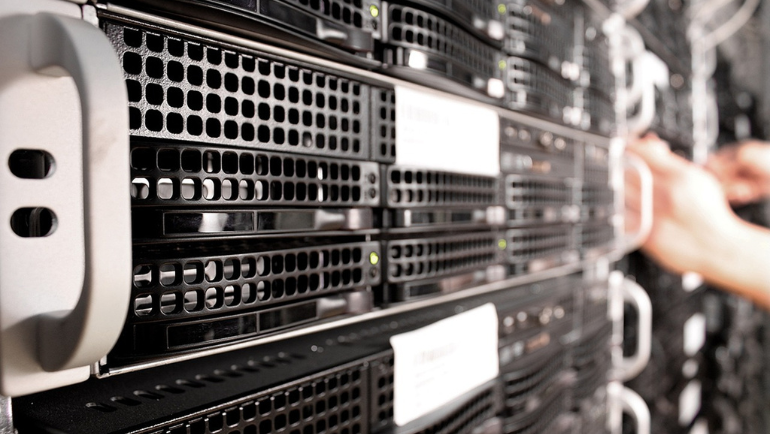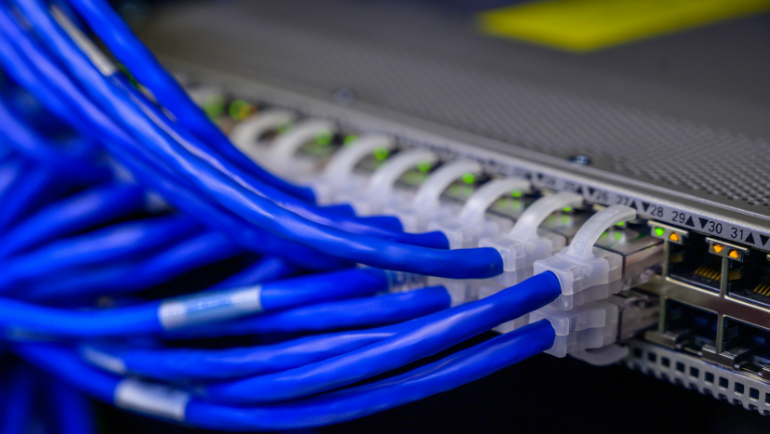
Data is the most important commodity in the world of businesses, protecting it requires careful evaluation of available technologies. RAID stands for Redundant Array of Independent Disks and offers you a wide range of options based on the enterprise’s workload environment. Today, when data security and corruption prevention are the top priority of businesses, the RAID system has never been more useful.
In this article, you will learn about RAID technology, its types, advantages, disadvantages, and applications in detail.
What is RAID?
RAID means a Redundant Array of Independent Disks used for connecting multiple Hard Disk Drives (HDDs) or Solid State Drives (SSDs) to act as a single storage unit. It allows enterprises to store data on multiple HDDs or SSDs at once in different places, preventing data loss in case of a drive failure. Many levels are available in RAID, some provide redundancy, while others don’t.
Enterprises employ different RAID levels to take benefit of external hard drives offering high mobility and flexibility in storing and accessing data. However, it’s important to understand each RAID level to better safeguard enterprise operations.
Architecture of RAID
The architecture of RAID is a little bit complex. RAID controllers trick the computer system into considering multiple disks as a single unit. The two most important functions RAID performs are striping and mirroring of data on another disk. Mirroring is the replication of data while stripping is the spilling of data across available disk space in different sectors. Parity is another way of securing data, which involves saving information across the disk arrays. Therefore, allowing you to recreate or reconstruct the affected data in case of drive failure.
The best part about RAID is that it offers zero downtime and high availability as all drives connected to it continue to work regardless of individual disk failure. Furthermore, the drive can easily be repaired on running PCs and servers via the hot swapping feature. It is important to know that data retrieval from faulty drives varies on the RAID levels, so it is best to give a thought over your enterprise RAID architecture before purchase.
To ensure foolproof redundancy, enterprises opt for Nested RAID levels that combine two or more RAID configurations to offer better performance boosts.
How Does It Work?

RAID arrays appear as a single logical drive in the operating system (OS). It allows Input/Output (I/O) operations while using multiple disks to increase the mean time between failures. Disk mirroring or disk striping copies identical data on multiple drives by dividing it into units from 512 bytes to several megabytes.
The stripes are typically set up into small sectors, while a multiuser system uses wide sectors to streamline data retrieval. RAID functions by employing various techniques known as RAID levels. Where each level provides a different balance of performance, data availability, and storage capacity.
RAID Types and Levels
Many types of RAID types and levels can be implemented in enterprise systems. What to choose varies depending on your workload, system requirements, and application. That said, enterprises may need to consult an expert in the field to better understand their options. Here is a list of RAID modes and types available for enterprises.
- RAID 0 (Data Stripping)
- RAID 1 (Disk mirroring)
- RAID 2 (Bit-level data striping with dedicated parity)
- RAID 3 (Byte-level data striping with dedicated parity)
- RAID 4 (Block-level striping with dedicated parity)
- RAID 5 (Data Stripping with Parity)
- RAID 6 (Data Stripping with double Parity)
- Nested RAID
- Hybrid RAID
- Non-Standard RAID
- Standard RAID Levels
What is RAID GROUP?
A RAID group avoids RAID failures when drives are added to a storage system like SAN or NAS for expansion. This allows enterprises to configure multiple RAID arrays in a storage pool with a choice to select different drive form factors and an overall balanced performance.
The primary difference between the non-RAID group array and the RAID group array is the fault tolerance. In the non-RAID group, the fault tolerance is fixed, so adding more devices will lead to RAID failure. This doesn’t happen in RAID groups, increasing the overall system fault tolerance and future storage expansion options.
Applications of RAID Technologies

A vast sector of enterprises use RAID technologies and its types in numerous applications some are as follows:
- Enterprise Servers: The data availability, speed, and real-time backup are crucial for enterprise servers
- Data Centers: A large amount of data requires an extensive storage system to enhance data integrity and performance
- Database Management: Fast access to data and higher availability are greatly achieved through RAID configuration in database enterprises
Pros and Cons of RAID
The following table will highlight the major advantages and disadvantages of RAID technology briefly.
Pros
Let’s look at the benefits of RAID technology in enterprise environments.
Data Redundancy
RAID system protects the data from corruption, loss, or damage. Data mirroring and parity across multiple drives enables enterprises to recover data if the storage drive fails. It helps minimize potential downtime while increasing data integrity. Enterprise can add more disks to the array, increasing storage capacity
Performance Enhancement
RAID significantly improves enterprise storage devices’ performance. This allows your system to execute multiple operations simultaneously with little bottlenecks. The parallel processing due to RAID improves data read and write speed.
Salability
Additional storage drives can be added to your RAID system easily. With the help of the hot swapping feature enterprises can replace or add new drives without downtime. RAID setup ensures effortless expansion of your data storage pool.
Cons
RAID-compatible storage devices are crucial for enterprises but they do come with their drawback, some are mentioned as follows.
Cost
RAID implementation in enterprise PCs and servers is expansive, particularly in high-level RAID configurations. The larger the RAID setup more additional cost of cooling fans, cabling, and PSUs will add on, making it less cost-efficient.
Complexity
As RAID levels increase from RAID 0 to RAID 6, particularly in Nested RAID, configuration and management become more challenging. This requires you to spend more money on expert technicians while risking data loss in case of misconfiguration.
Potential Data Loss & Reduce Performance
Some RAID configurations such as RAID 1 and RAID 5 affect your data writing and reading speed, due to parity calculations. As it takes more time to access data from different sections of the drive. However, in the worst cases, the whole data could be lost if the RAID controller malfunctions.
Which RAID Storage to Choose for Enterprises?
Selecting RAID storage for your enterprise requires consideration of factors such as performance, data redundancy, needs, and more. Enterprises buy RAID controllers or expansion cards for connecting multiple disks in an array. Furthermore, some network storage devices for sale such as Network Attached Storage (NAS) and Storage Area Networks (SAN) have pre-built RAID configurations for shared data and protection. Computing Worlds provides a wide range of new, used, and refurbished storage devices for sale at competitive prices.
You can also request a bulk quote online for the required raid controllers.
Future of RAID Technology
Many new technologies like Erasure Coding (EC) in which data is broken into fragments, expanded, encoded, and stored with redundant data pieces. This makes RAID technology a thing of the past, but still, many enterprises use RAID arrays due to their cost efficiency. However, the major con of RAID arrays is that the chances of error increase with greater storage capacities. The rise of SSDs has alleviated the need for RAID again in enterprises due to their longer lifespan and speed. Therefore, RAID still remains an ingrained part of data storage as major technology leaders like IBM continue to release RAID products.
Frequently Ask Questions
How Does RAID Improve Performance?
RAID improves performance by breaking data into smaller groups and storing them in separate disks, allowing swifter response time.
Do all hard drives support RAID?
RAID can be used with any type of hard drive. Moreover, do check the drive whether the RAID supports a drive interface like SATA or NVMe to save yourself from compatibility issues.
Can you run an SSD and HDD in RAID?
Yes, you can run SSD and HDD drives in RAID and, also combine them if required. However, different SSD interfaces like SAS or SATA may be incompatible with RAID or HDD drives.
What are the Considerations When Setting up a Raid Configuration?
5 main things to consider when choosing RAID levels.
- Storage efficiency
- Performance
- Data redundancy
- Rebuild factor
- Cost
RAID technology offers a diverse range of options for enterprises seeking to enhance data storage, security, and performance. By understanding RAID architecture, types, and applications, businesses can make informed decisions, and employ hot swap and hot plug features in compatible raid levels to safeguard their valuable data effectively. RAID continues to be a crucial component in enterprise environments due to its ability to provide redundancy, high availability, and improved fault tolerance. For more information, stay tuned to the Computing Worlds blog.







